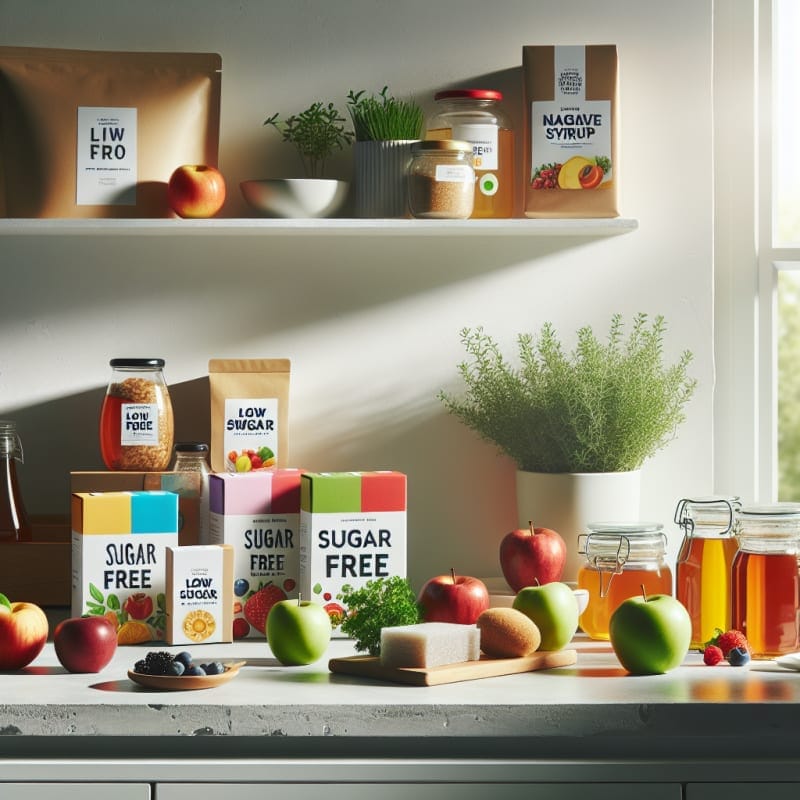The Rise of Sugar Sensitivity: How Consumers Are Responding to Hidden Sugars and Seeking Alternatives
Sugar sensitivity is becoming one of the most talked-about health topics of 2025. With consumers increasingly aware of hidden sugars in everyday foods, the shift toward low sugar diets and sugar-free alternatives is reshaping the global food industry. From supermarket shelves to social media trends, people are demanding transparency and healthier options — a movement backed by new scientific findings and regulatory attention.
What Is Sugar Sensitivity?
Sugar sensitivity refers to how an individual’s body reacts negatively to excess sugar intake. Symptoms can range from fatigue, bloating, and mood swings to more serious metabolic issues such as insulin resistance and gut imbalance. According to recent CDC research (CDC, 2025), rising rates of metabolic disorders are linked to hidden sugar consumption in processed foods, prompting public health agencies to call for clearer labeling and sugar reduction strategies.
Common Sugar Sensitivity Symptoms
- Energy crashes after meals
- Digestive discomfort or bloating
- Increased cravings for sweets
- Brain fog or irritability
- Skin inflammation and acne flare-ups
Why Sugar Sensitivity Is Trending in 2025
Several factors have fueled the rise of sugar sensitivity awareness:
| Trend Driver | Impact on Consumers |
|---|---|
| Regulatory Guidance | Public health agencies like the CDC are emphasizing sugar reduction and transparent labeling (CDC, 2025). |
| Social Media Awareness | Viral campaigns highlight the hidden sugars in “healthy” foods, sparking consumer backlash and reformulation efforts. |
| Innovation in Food & Beverage | Brands are investing in natural sweeteners and low sugar products to meet demand (Food & Hotel Asia, 2025). |
| Health & Wellness Trends | Consumers are prioritizing gut health and metabolic balance as part of holistic wellness (Food Institute, 2025). |
Hidden Sugars: The Silent Culprit
Hidden sugars are found in foods that don’t taste sweet — like sauces, salad dressings, breads, and even “healthy” protein bars. These sugars often appear under names such as maltose, dextrose, fructose syrup, or cane juice. Recognizing these aliases is crucial for managing sugar sensitivity symptoms and maintaining a balanced diet.
How to Identify Hidden Sugars in Food
- Check ingredient lists for words ending in “-ose” (e.g., glucose, sucrose).
- Look for syrups and concentrates — common sugar substitutes in processed foods.
- Compare “total sugars” and “added sugars” on nutrition labels.
- Use apps like Food Scan Genius to instantly detect hidden sugars and allergens.
“I started using Food Scan Genius to check my snacks, and it’s amazing how many ‘healthy’ bars contain added sugars. It’s made shopping so much easier!” — Maria, Food Scan Genius user
Best Natural Sweeteners for Sugar Sensitivity
For those managing sugar sensitivity, switching to natural sweeteners can help stabilize blood sugar and reduce cravings. The natural sweeteners market is booming in 2025, offering safer alternatives that support gut health and metabolic balance.
| Sweetener | Source | Benefits |
|---|---|---|
| Stevia | Plant-derived | Zero calories, suitable for diabetics |
| Monk Fruit | Natural fruit extract | Low glycemic index, antioxidant properties |
| Erythritol | Sugar alcohol | Minimal impact on blood sugar, gut-friendly |
| Allulose | Rare sugar found in fruits | Tastes like sugar but with fewer calories |
Sugar Sensitivity and Gut Health
Emerging research shows that excessive sugar disrupts gut microbiota, leading to inflammation and digestive issues. Reducing hidden sugars may improve microbiome balance and overall well-being. The Food Institute notes that gut health is now a major driver of consumer behavior, influencing product innovation across the food industry.
Foods to Avoid with Sugar Sensitivity
- Sweetened beverages (sodas, flavored coffees, energy drinks)
- Processed snacks and cereals
- Condiments like ketchup and barbecue sauce
- Packaged breads and pastries
- “Low-fat” yogurts and dressings (often high in added sugars)
Low Sugar Products in 2025: What’s Trending
According to Food Institute, brands are reformulating products to meet consumer demand for low sugar and sugar-free alternatives. From beverages to snacks, the market is shifting toward transparency and functional nutrition. Consumers are also using digital tools like Food Scan Genius to verify ingredient claims and avoid hidden sugars.
Actionable Tips for Managing Sugar Sensitivity
- Read labels carefully — focus on “added sugars.”
- Choose whole foods over processed items.
- Use natural sweeteners instead of refined sugar.
- Track your sugar intake with mobile apps.
- Stay hydrated and maintain balanced meals with fiber and protein.
Why Ingredient Transparency Matters
As sugar sensitivity awareness grows, consumers are demanding honesty from food brands. Mislabeling and hidden ingredients have eroded trust, making transparency a top priority. Tools like Food Scan Genius empower shoppers to make informed decisions, promoting accountability and healthier choices.
FAQ: Sugar Sensitivity Explained
What causes sugar sensitivity?
Sugar sensitivity can result from metabolic imbalances, gut microbiota disruption, or genetic predisposition. Overconsumption of hidden sugars worsens these effects, leading to fatigue and digestive issues.
How can I tell if I’m sugar sensitive?
Common signs include energy crashes, bloating, and mood swings after consuming sugary foods. Tracking symptoms and reducing sugar intake can help identify sensitivity patterns.
Are natural sweeteners safe?
Yes. Natural sweeteners like stevia and monk fruit are generally considered safe and beneficial for people managing sugar sensitivity, according to market and health data from Food & Hotel Asia.
Can sugar sensitivity affect gut health?
Absolutely. High sugar intake disrupts gut bacteria balance, increasing inflammation and digestive discomfort. Reducing sugars supports a healthier microbiome.
How does Food Scan Genius help with sugar sensitivity?
Food Scan Genius scans product labels and identifies hidden sugars, additives, and allergens instantly — helping users make smarter, low-sugar choices.
Final Takeaway
In 2025, sugar sensitivity is more than a health buzzword — it’s a reflection of how consumers are redefining wellness. By learning to identify hidden sugars, choosing natural sweeteners, and using smart tools like Food Scan Genius, individuals can take control of their diets and improve both metabolic and gut health. Ingredient transparency is no longer optional — it’s the foundation of trust in modern food culture.






1 Comment
[…] as sugar. These include syrups, concentrates, and fruit-based sweeteners. A detailed analysis from Food Scan Genius highlights how ingredient transparency is becoming a major consumer […]